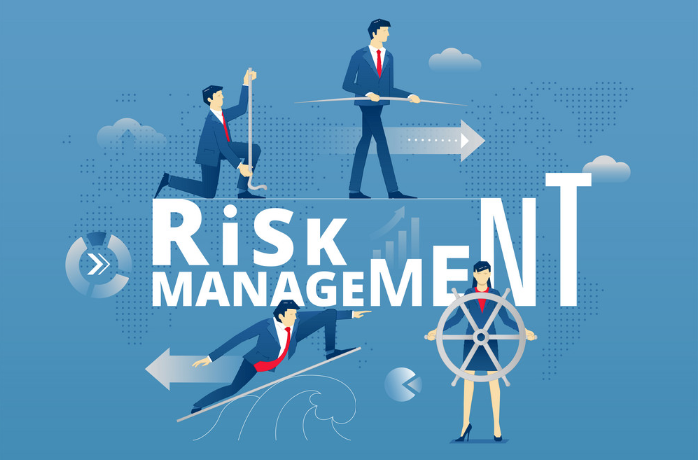In medical device manufacturing, the focus on risk management has traditionally centered on product-based hazards. While it is unquestionably critical to ensure the safety and efficacy of the devices themselves, it is equally important to consider the often-overlooked aspect of process-based risks. These risks extend beyond the confines of the final product and have the potential to affect not only the well-being of employees but also the integrity of the entire manufacturing unit. This article sheds light on the significance of identifying, assessing, and mitigating process-related risks that may not only pose threats to the workforce but also have far-reaching implications for the quality, compliance, and sustainability of the manufacturing operation.
Quality Risk Management (QRM) in the context of medical devices is a critical aspect of ensuring patient safety and product efficacy. As the medical device industry continues to evolve and innovate, the need for robust risk management practices becomes increasingly evident. This article explores the key principles, methodologies, and regulatory requirements surrounding Quality Risk Management in the realm of medical devices. It delves into the significance of identifying, assessing, and mitigating risks to improve product quality, patient outcomes, and regulatory compliance.
Introduction to Quality Risk Management (QRM)
With reference to ISO 13485 which talks about risk and their assessment not only for product and its manufacturing process involved. The Clause 4.1.2 (b) & 7.1 - apply a risk based approach to the control of the appropriate processes needed for the quality management system.Quality Risk Management is a systematic process for assessing, controlling, communicating, and reviewing risks to the quality of medical devices throughout their lifecycle. It is an indispensable component of quality management systems and ensures that medical devices are manufactured, distributed, and used with minimal risk to patients and users. QRM is rooted in the understanding that every medical device comes with inherent risks, and managing these risks is a shared responsibility among manufacturers, regulators, healthcare providers, and patients.
Regulatory Landscape
The regulatory framework for medical devices varies globally, but most regions, including the European Union (EU) and the United States, mandate adherence to rigorous QRM practices. For example, the EU Medical Device Regulation (MDR) and In Vitro Diagnostic Regulation (IVDR) emphasize the importance of risk management throughout the product lifecycle. In the U.S., the Food and Drug Administration (FDA) provides guidance on risk management in the Quality System Regulation (QSR).ISO 14971, ISO 24971 are independent ISO Standards particularly meant to identification and mitigation of Risk and Hazards.
Key Principles of Quality Risk Management
- Risk Assessment: The initial step involves identifying potential hazards and assessing their impact on the device's safety and performance. This process utilizes tools such as Failure Mode and Effects Analysis (FMEA) to evaluate risks comprehensively.
- Risk Control: Once risks are identified, manufacturers must implement controls and mitigation strategies to minimize these risks. This may include design changes, process improvements, or user training.
- Risk Communication: Effective communication of risks is essential throughout the supply chain. Manufacturers must inform regulators, healthcare providers, and end-users about potential risks and the measures taken to mitigate them.
- Periodic Review: QRM is an ongoing process, requiring regular reviews to ensure that risk management measures remain effective as devices evolve and new information becomes available.
The two primary principles of Quality Risk Management are
- the evaluation of the risk to quality should be based on scientific knowledge and ultimately link to the protection of the patient and
- the level of effort, formality and documentation of the Quality Risk Management process should be commensurate with the level of risk.
- Process Interaction
- Sequence of Events
- Risk Identification address what might go wrong.
- Risk analysis, to analyze the risk involved.
- Risk evaluation, comparing the risk identification and analyze the risk against the criteria.
- Qualitatively: The risk shall be categorized into “High” “Medium” and “Low”.
- Quantitatively: The risk shall be provided with numerical values “1” “2” “3” “4” and “5”.
Understanding Process-Based Risks
The conventional approach to risk management has predominantly focused on product-based hazards. This prevailing perspective is undeniably crucial for ensuring the safety and efficacy of medical devices.Chemical Exposure
- Risk: Employees may be exposed to hazardous chemicals during device production, which can lead to health issues.
- Mitigation: Implement proper ventilation systems, provide personal protective equipment (PPE), and offer comprehensive training on chemical handling and safety protocols.
Ergonomic Hazards
- Risk: Repetitive tasks or improper workstation design can result in musculoskeletal disorders among employees.
- Mitigation: Redesign workstations for ergonomics, introduce regular breaks, and provide ergonomics training to workers.
Equipment Failure
- Risk: Malfunctioning machinery can lead to production delays and product defects.
- Mitigation: Implement a regular equipment maintenance schedule, conduct preventive maintenance, and have backup machinery on standby.
Process Deviations
- Risk: Deviations from standard operating procedures can result in inconsistent product quality.
- Mitigation: Develop robust quality control processes, provide comprehensive training, and conduct regular audits to ensure adherence to procedures.
Human Error
- Risk: Mistakes made by employees during the manufacturing process can result in product defects.
- Mitigation: Provide comprehensive training, establish clear procedures, and encourage a culture of quality and accountability.
Benefits of Effective Quality Risk Management
A well-implemented QRM system offers several advantages, including:- Enhanced patient safety and satisfaction
- Compliance with regulatory requirements
- Improved product quality and reliability
- Reduction in costly recalls and adverse events
- Greater confidence among healthcare providers in device safety and efficacy


